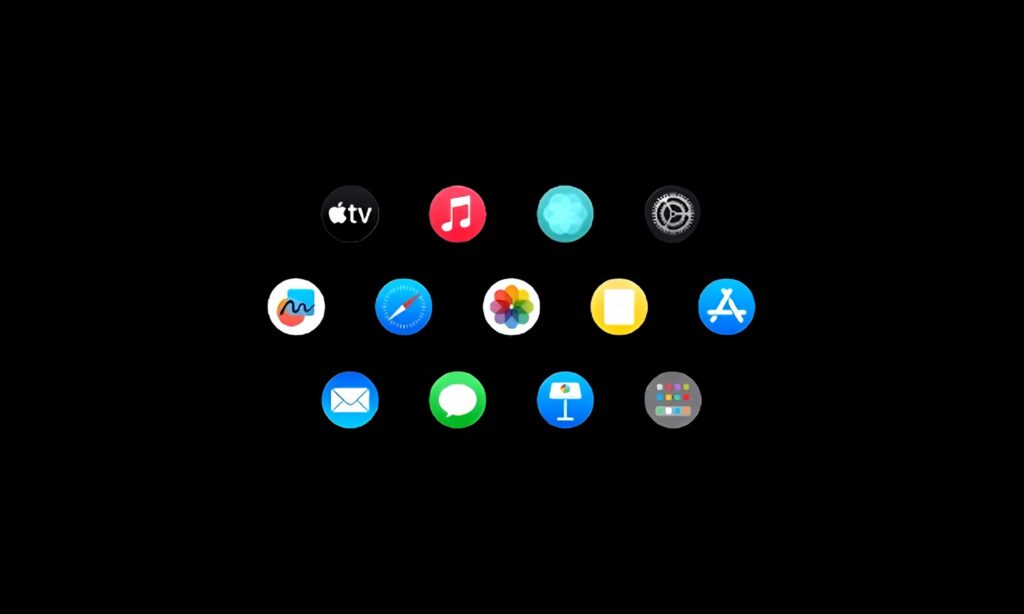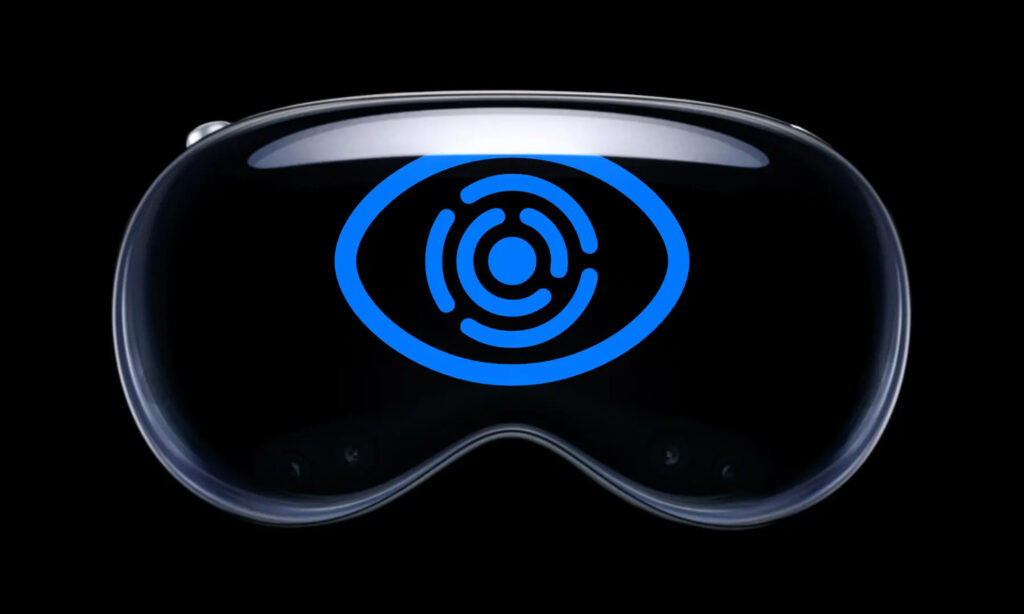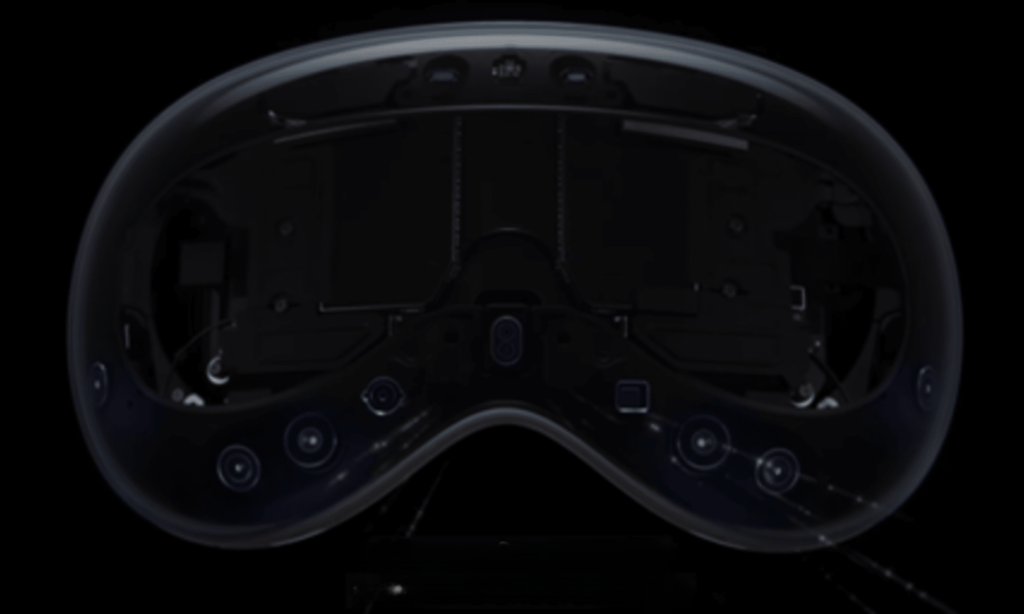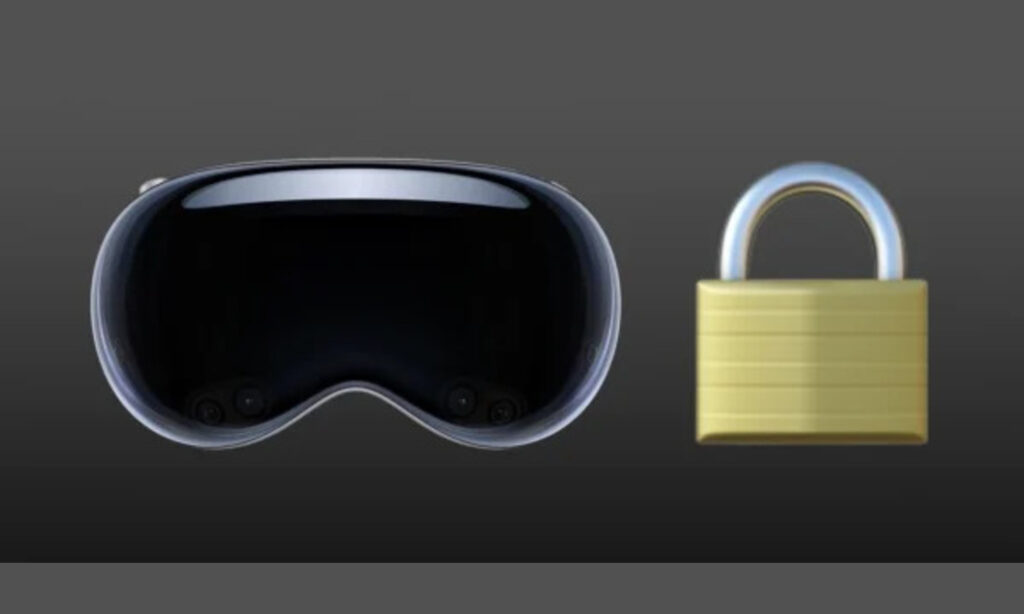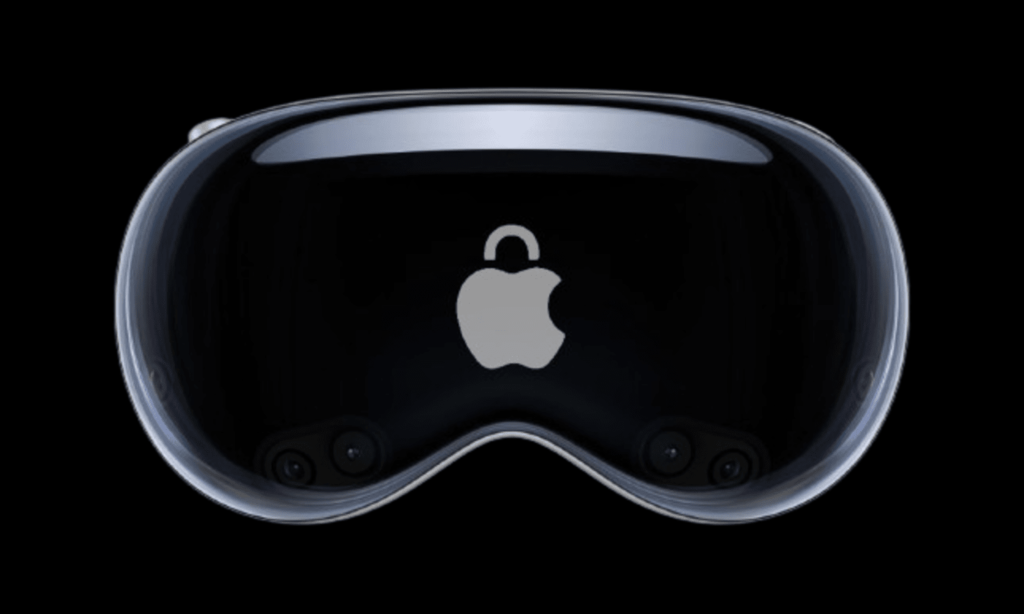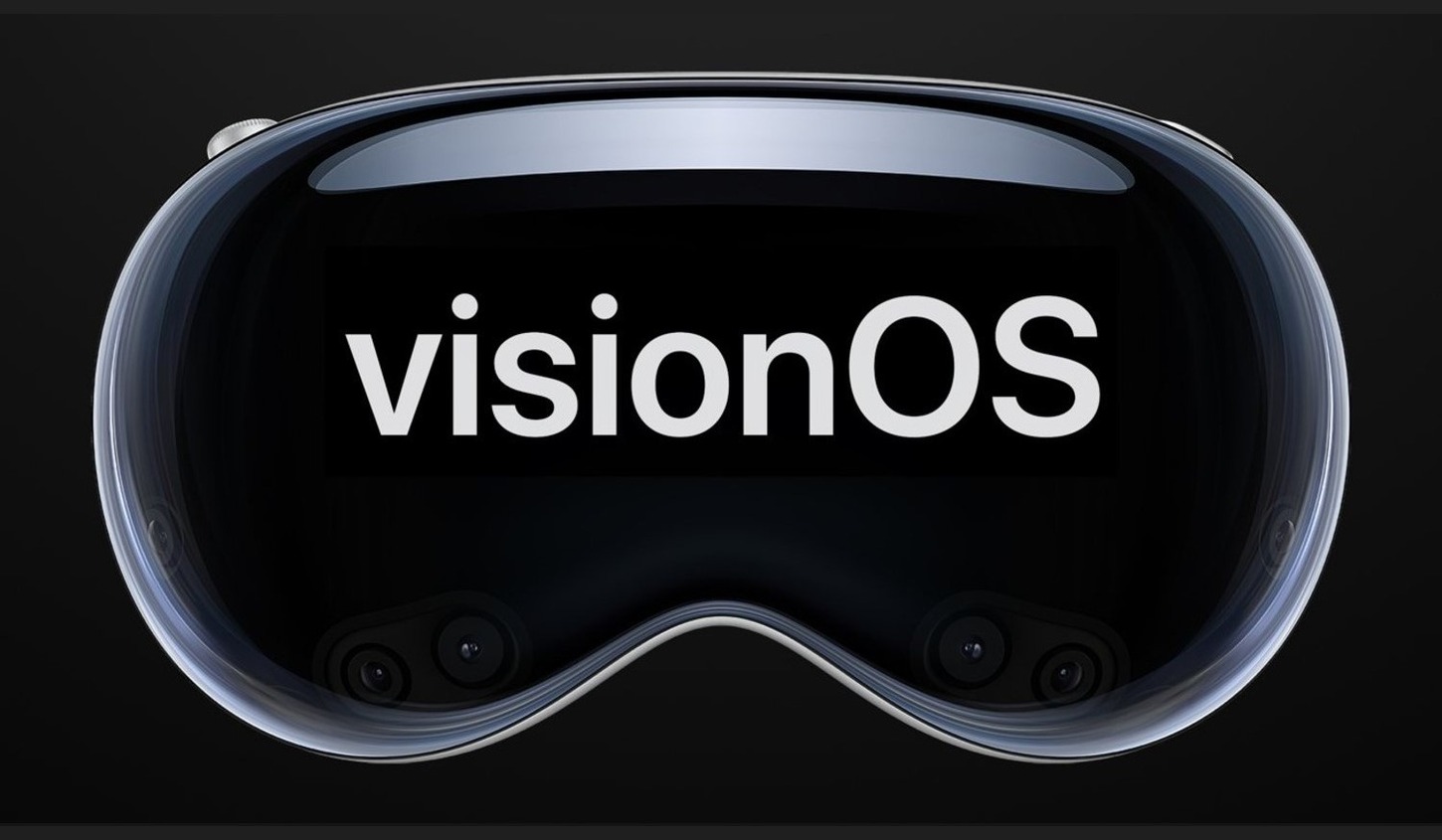The Apple Vision Pro is more than just powerful hardware; it requires a sophisticated operating system (OS) to manage everything behind the scenes. In this section, we’ll look at the Vision Pro’s operating system, including its functions, possible features, and technical specifications that tie everything together.
Understanding the Operating System:
The device’s operating system (OS) serves as a central control hub, overseeing all hardware components, software applications, and user interactions in the AR environment. The invisible conductor keeps the AR experience running smoothly, intuitively, and immersively.
The Apple Vision Pro is more than a device; it represents a new level of personalized and immersive augmented reality (AR) experiences. With an emphasis on an appealing user interface, accessibility features, and prospective breakthroughs such as machine learning integration, Vision Pro aims to transform how people engage with digital material. Let’s look at this user benefits and notable features, highlighting its ability to provide a user-friendly and tailored AR experience.
Intuitive User Interface:
- Simplified Navigation: The device has a simple user interface that is intended to make navigating easier and more accessible. With straightforward motions and controls, users can easily traverse menus, interact with AR content, and personalize their experiences.
- Personalized Settings: This enables users to customize their AR experience with settings according to their preferences. Users can customize their experience by adjusting display brightness and contrast, as well as fine-tuning audio settings.
Accessibility Features:
- Inclusive Design: Accessibility is central to Apple Vision Pro’s design philosophy, ensuring that users of all abilities may have a rich and immersive AR experience. Built-in accessibility features like VoiceOver, Magnifier, and Switch Control allow people with disabilities to navigate AR material with confidence and independence.
- Customizable Accessibility Options: It provides a variety of adjustable accessibility settings, allowing users to personalize their AR experience to their own needs. Users can tailor their experience to their preferences and accessibility needs, whether by changing font size, using color filters, or activating haptic feedback.
Future Advancements:
- Machine Learning Integration: The inclusion of machine learning technologies into the Apple Vision Pro opens up interesting possibilities for the future. Machine learning algorithms can exploit user behavior, preferences, and interactions to tailor the AR experience in real time. From proposing suitable AR material based on user preferences to dynamically modifying interface components for better usability, machine learning integration promises to improve the overall user experience with the device.
- Enhanced Personalization: With machine learning integration, the Vision Pro can learn from user interactions and customize its functionality to meet individual needs. Whether it’s recommending AR apps, improving performance settings, or offering contextual help, that can provide a genuinely personalized AR experience that grows with the user over time.
How the Operating System Works:
While specifications remain unknown, here’s a rundown of how the Vision Pro’s OS could work:
Built on a Familiar Foundation: The Vision Pro’s OS is most likely based on existing Apple operating systems like as macOS, iOS, and iPadOS. This familiarity may have advantages:
- Seamless Integration with Apple Devices: Consider using your iPhone or iPad to interact with the Vision Pro, utilizing capabilities such as Handoff to seamlessly transfer tasks or content across devices.
- Developer Advantages: Developers familiar with other Apple platforms may find it easier to design AR applications for Vision Pro, potentially speeding up the expansion of the AR app ecosystem.
Spatial Computing Focus: The OS will most likely be tailored for spatial computing, allowing users to interact with the AR world in a natural and straightforward manner.
- Hand and Eye Tracking: Imagine controlling objects in the AR environment using hand motions or simply looking at them. The operating system will need to interpret these inputs seamlessly.
- Spatial Audio Integration: The OS is anticipated to control spatial audio elements, resulting in a realistic and immersive soundscape within the AR world.
Advanced Features of OS:
Beyond the essential functionality, the Vision Pro’s OS may boast additional features.
World Understanding and Mapping: The operating system might theoretically use built-in sensors and cameras to analyze your surroundings. This allows for:
- AR Object Placement: Consider placing virtual objects in the AR environment that interact realistically with the actual world.
- Spatial Anchors: The operating system could generate and store spatial anchors, which effectively remembered the location of specific points in the real world. This enables AR objects to remain in the same area even if you remove your Vision Pro and return it later.
Privacy and Security Features: The operating system will most likely prioritize user privacy and security in the AR environment. Imagine characteristics like:
- App Sandboxing: This could prevent applications from accessing superfluous data or hardware components, ensuring user privacy.
- Secure Enclaves: Sensitive user data could be stored in secure enclaves, which are segregated portions of the operating system that provide additional protection.
Technical Specifications:
Though information has yet to be confirmed, below is a breakdown of the Vision Pro’s anticipated operating system specifications:
- Based on Apple’s Existing Operating Systems (potentially macOS, iOS, and iPad OS foundation). Concentrate on Spatial Computing elements such as hand and eye tracking, spatial audio integration, and world understanding.
- Potential for ARKit integration: ARKit is Apple’s framework for designing augmented reality applications. A seamless interaction with ARKit would allow developers to create immersive AR experiences for the Vision Pro.
- Security Features: Secure boot, app sandboxing, and secure enclaves are all hypothetical.
Built-in Features for a Seamless Experience:
The Vision Pro’s OS may include features that improve the overall user experience:
- Intuitive User Interface: The OS would most likely emphasis an intuitive user interface, allowing users to easily traverse the AR world and engage with applications, even if they are unfamiliar to AR technology.
- Accessibility Features: The operating system could include accessibility features to ensure that everyone can enjoy the augmented reality experience. Imagine characteristics like:
- Voice Control: Imagine utilizing voice commands to control the device and interact with augmented reality applications.
- Text-to-Speech: The OS may theoretically read on-screen text loudly, making the AR experience more accessible to individuals with visual impairments.
Considerations for the Operating System:
Apple may offer robust developer tools and resources to help create interesting AR experiences, such as:
- Performance Optimization: The OS must be optimized for the device hardware, balancing power efficiency and smooth performance in the AR environment.
- Security Updates: Regular security updates will be critical for safeguarding user privacy and data in the AR environment.
- App Ecosystem Development: A robust app ecosystem is required for a successful AR platform. The OS must be developer-friendly to stimulate the creation of high-quality AR applications for the Vision Pro.
- User Management and Profiles: Consider creating multiple user profiles on the device. This could allow numerous users to share the headset while still preserving their own settings and experiences.
- Parental Controls: The operating system could include parental control capabilities to limit children’s access to AR material and applications.
- Developer Tools and Resources: Apple might supply developers with complete tools and resources to help them create AR applications for Vision Pro. This may include:
- ARKit Enhancements: Consider developments in ARKit that are specifically designed for Vision Pro’s technology, allowing developers to create even more immersive and interactive AR applications.
- Sample Code and Tutorials: Comprehensive example code and tutorials from Apple could drastically cut development time and enable developers to create novel AR experiences for Vision Pro.
Future of AR Operating Systems:
The Apple Vision Pro’s operating system sets the path for future advances in augmented reality. Here’s a look at what’s on the horizon.
- Machine Learning Integration: Machine learning could be integrated within the OS to further enhance the AR experience:
- Adaptive Interfaces: The operating system might learn the user’s preferences and modify the AR interface accordingly.
- Predictive Interactions: The operating system could anticipate user demands and behaviors in the augmented reality environment, making suggestions or optimizing procedures.
- Contextual Awareness: The operating system might employ machine learning to analyze the user’s environment and context, and then recommend related AR applications or content.
- Mixed Reality (MR) Support: The operating system may evolve to allow mixed reality (MR) experiences, which seamlessly integrate the physical and digital worlds. Consider controlling virtual things in an AR environment that interact with real-world elements in a realistic manner.
- Open Source Development: While this is theoretical, Apple may explore opening up specific portions of the OS to developers. This could encourage creativity and speed up the development of advanced AR applications and functionality.
The Apple Vision Pro’s OS represents a significant step forward for AR technology, but the future holds exciting possibilities:
- Machine Learning and AI Integration: Consider the OS using machine learning (ML) and artificial intelligence (AI) to customize the AR experience. For instance, the operating system could:
- Learn User Preferences: The OS may adapt to your tastes, proposing appropriate AR applications or even learning your preferred interaction ways in the AR world.
- Context-Aware Computing: Consider the OS using AI to analyze your surroundings and tailor the AR experience accordingly. For example, it could show pertinent information about a landmark you’re looking at in the AR environment.
- Cross-Platform Compatibility: While the Vision Pro may have its own specialized operating system, envision a future in which AR experiences may effortlessly transfer across different AR devices and platforms. This would necessitate standardization and collaboration among producers.
Challenges and Considerations:
- Security Landscape: Security risks grow in tandem with the sophistication of AR experiences. To address potential security vulnerabilities and preserve user privacy, the operating system must evolve on a constant basis.
- Performance Optimization: Balancing power conservation with smooth performance in the AR environment will be a continuous challenge for the OS, particularly as AR applications get more complicated.
- User Interface Refinement: Creating an intuitive and user-friendly interface for AR experiences is critical. The operating system will need to adapt and evolve as user engagement methods and expectations change in the AR world.
- Privacy Concerns: The AR world presents significant privacy challenges. The OS must ensure that user data is collected and used responsibly, with clear user consent and strong security mechanisms in place.
- Standardization for the Future: Establishing universal standards for AR operating systems and development tools will be critical to ensuring a seamless AR future. This will encourage collaboration and provide a more consistent AR experience across devices.
The Apple Vision Pro’s operating system acts as a secret conductor, orchestrating the entire AR experience. By potentially expanding on existing Apple operating systems, focusing on spatial computing technologies, and prioritizing user privacy and security, the Vision Pro’s OS seeks to provide a seamless and immersive basis for exploring the world of augmented reality. As machine learning, mixed reality, and perhaps open-source development advances, we may expect even more powerful and diverse AR operating systems that will change the way we interact with the digital environment.
Robust OS is Crucial for Apple Vision Pro’s AR Success:
The device is more than simply high-resolution displays and clever sensors; it’s a complicated environment in which hardware and software interact. At the center of this ecosystem is the operating system (OS), an unsung hero who orchestrates a flawless and immersive Augmented Reality (AR) experience. Here’s an in-depth look at why a strong operating system is important to the success of the device, including the importance of security updates, app ecosystem development, and the OS’s role in creating an immersive AR environment.
Security Updates for Protecting Your AR Playground:
Imagine touring a virtual museum in your living room using the device. Suddenly, a rogue application infiltrates the system, with the ability to steal your personal information or ruin the entire AR experience. Yikes! A strong operating system with frequent security upgrades protects against such threats by ensuring that:
- Vulnerability Patching: The operating system is continually updated with patches that address reported security flaws, preventing hackers from gaining access to your device or data.
- Data Protection: A secure operating system protects your personal information, login credentials, and financial data while using AR applications.
- Privacy Control: The OS gives you control over how AR apps access your data and interact with your surroundings, establishing a sense of trust and security in the AR world.
- Protection Against Vulnerabilities: A robust operating system, such as iOS for this device is crucial in safeguarding users from security vulnerabilities and threats. Apple’s regular security updates fortify Vision Pro against emerging threats, vulnerabilities, and viruses, protecting user data and privacy.
- Maintaining Trust and Confidence: Timely security updates establish trust and confidence in users, ensuring them that their AR experiences with the Vision Pro are safe and secure. By prioritizing security updates, Apple demonstrates its dedication to the integrity and dependability of the device operating system, fostering long-term user happiness and devotion.
With the Apple Vision Pro potentially incorporating technologies like as spatial mapping and hand tracking, a safe operating system becomes even more important. Regular security updates will keep this accurate map of your surroundings and your hand motions in the AR space safe from unauthorized access.
App Ecosystem Development:
The full strength of this high-tech gadget is found in its software ecosystem. A solid operating system creates an environment in which developers can create unique AR experiences that push the boundaries of what is possible. Here’s what a powerful OS provides:
- Openness with Control: The operating system should strike a balance between openness, allowing developers to fully utilize the hardware’s capabilities, and control, ensuring apps match Apple’s security and quality standards.
- Development Tools and Resources: A powerful operating system gives developers complete tools and resources, making the AR app creation process more efficient. This may contain software development kits (SDKs), documentation, and technical assistance.
- Performance Optimization: The operating system should be configured for augmented reality applications to ensure smooth performance, low latency, and optimal use of hardware resources.
- Curation and Quality Assurance: A strong operating system provides a secure and dependable foundation for the creation and distribution of augmented reality applications within the Apple ecosystem. Apple assures that AR applications available for the device satisfy, high quality, performance, and security standards via tough app review processes and developer guidelines.
- Stimulating Innovation: The Vision Pro’s sophisticated OS promotes innovation in the AR app ecosystem by offering developers with powerful tools, frameworks, and APIs for creating immersive experiences. With support for ARKit and other developer tools, It enables developers to push the limits of creativity and produce compelling AR applications that take advantage of the device’s hardware capabilities.
Apple, famed for its developer-friendly environment, is likely to use its existing App Store infrastructure to power the Apple Vision Pro. A powerful operating system will enable developers to produce high-quality AR apps that leverage the Vision Pro’s unique characteristics like as spatial mapping and eye tracking, resulting in a diversified and thriving app ecosystem.
Crafting an Immersive AR Environment:
The ultimate goal of the Apple Vision Pro is to create an immersive augmented reality experience that seamlessly integrates the digital and physical worlds. Here is when the OS plays a critical role:
- Low Latency and Smooth Performance: A sluggish AR experience might undermine the sensation of immersion. The operating system must be optimized for minimal latency, ensuring real-time interaction between your activities and the augmented reality world.
- Resource Management and Optimization: The operating system should manage resources efficiently, such as processing power and battery life, to ensure that AR apps run smoothly without compromising performance.
- AR Frameworks and APIs: The operating system should have sophisticated AR frameworks and application programming interfaces (APIs), which will enable developers to construct realistic and engaging AR experiences.
- Optimized Performance: The OS is critical in maximizing the performance of AR applications on the Vision Pro, ensuring smooth rendering, rapid interaction, and low latency. The OS takes advantage of hardware-accelerated graphics, advanced rendering techniques, and system-level optimizations to enhance the device’s potential for delivering immersive AR experiences.
- Seamless Integration: A solid operating system enables seamless integration of AR apps with the device’s hardware, sensors, and peripherals. The Vision Pro’s operating system guarantees that AR experiences interact flawlessly with the device’s camera, motion sensors, and audio system, improving immersion and realism.
Imagine using the Apple Vision Pro to manipulate virtual items in your room. A well-designed operating system will ensure that these things respond rapidly to your actions, making them feel like natural extensions of the physical environment. Furthermore, the OS may include capabilities such as spatial audio that adapts dynamically to your head movements, further improving the immersive experience.
The device represents a significant advancement in the realm of augmented reality. However, a sturdy and well-designed operating system will unlock the hardware’s full capabilities. The operating system will be the silent conductor, orchestrating a seamless and enchanting trip into the world of augmented reality by prioritizing security upgrades, supporting app ecosystem development, and laying the groundwork for immersive experiences.
A Glimpse into the Future of AR:
The Apple Vision Pro is more than simply a VR headset or a mobile device; it’s a ground-breaking mixed reality (MR) gadget that blurs the distinction between the physical and digital worlds. Let’s look at how the device compares to existing technologies, with a focus on the operating system (OS) and its potential for spatial computing, world knowledge, and developer-friendly capabilities for creating ground-breaking AR applications.
Operating Systems A Tale of Different Beasts:
- VisionOS vs. VR Headsets: Existing VR headsets, such as the Oculus Quest and HTC Vive, often run modified versions of mobile operating systems (OSes) like Android. While functional, these operating systems promote 2D user interfaces and lack the depth-sensing capabilities required for full augmented reality experiences. Here’s where VisionOS comes in.
- Built for Spatial Computing: VisionOS was built from the bottom up for spatial computing, which means it understands 3D space and can interact with the real environment. This enables capabilities such as displaying virtual things on physical surfaces and manipulating them with hand motions.
- World Understanding: VisionOS takes advantage of the Apple Vision Pro’s sophisticated sensors and cameras to get a thorough understanding of the surrounding environment. This paves the path for features like spatial mapping, which creates a virtual representation of the real environment that can be seamlessly integrated with AR.
- Vision OS vs. Mobile OSes: Mobile operating systems such as iOS and Android are built for touchscreen interfaces and operate mostly in a two-dimensional world. While they may enable rudimentary AR features via apps such as ARKit, they lack the processing power and depth perception capabilities required for a fully immersive MR experience. VisionOS has various advantages:
- Enhanced Processing Power: The Apple Vision Pro is rumored to include a powerful dual-chip design that is specifically suited to handle the demanding duties of real-time spatial computing and augmented reality apps, outperforming most mobile devices’ processing capabilities.
- Eye Tracking Integration: VisionOS most likely incorporates eye-tracking technology, allowing for a more intuitive and natural way to engage with the AR environment. Consider picking objects merely by looking at them, which is not possible with touchscreens on mobile devices.
Spatial Computing and World Understanding:
Unlike other VR or mobile operating systems, VisionOS provides developers with a plethora of options for designing AR applications. Here’s what distinguishes it:
- Spatial Computing Frameworks: VisionOS is expected to include sophisticated spatial computing frameworks and APIs, allowing developers to construct AR experiences that use 3D space and interact seamlessly with the actual world. This could result in innovative applications in fields such as education, design, and perhaps gaming.
- World Understanding Tools: Developers can take advantage of the OS’s capacity to understand its surroundings via spatial mapping and sensor data. Consider developing an AR software that overlays historical information on real-world monuments, or a furniture app that lets you virtually arrange furniture in your space to see how it looks before purchasing it.
Fostering Innovation A Developer-Friendly Ecosystem:
Apple is known for its developer-friendly environment. Here’s how VisionOS positions itself to attract developers and promote AR innovation:
- Dedicated AR Frameworks and APIs: The operating system most likely includes powerful AR development tools that make it easier to create AR experiences. These tools may include:
- Object Recognition APIs: These enable developers to create Augmented Reality applications that recognize and interact with real-world items.
- Spatial Mapping APIs: These tools enable developers to construct AR experiences that take advantage of Vision Pro’s spatial awareness features.
- Leveraging Existing Tools: Developers who are familiar with Apple’s existing ARKit framework will likely find the switch to VisionOS simple. The OS may build on current tools and resources, shortening the learning curve for developers who already produce AR experiences for iPhones and iPads.
- Focus on User Experience: VisionOS is anticipated to prioritize a smooth and intuitive user experience. By giving clear rules and best practices to developers, Apple can assure a uniform and high-quality experience across all AR applications on the Vision Pro.
The Future of AR, A Vision Worth Exploring:
Despite the specifics of VisionOS are unknown, the promise of spatial computing features, world awareness, and a developer-friendly environment is obvious. Unlike previous VR or smartphone operating systems, VisionOS looks to be designed specifically to usher in a new era of augmented reality experiences. It’s a future in which the physical and digital worlds merge, and developers have the ability to create ground-breaking applications that change how we interact with the world around us.
The Potential for a Thriving AR Ecosystem:
A powerful operating system with a focus on spatial computing, world awareness, and developer friendliness can help the Apple Vision Pro build a healthy AR app market. Imagine the possibilities:
- Educational Applications: AR apps, which overlay virtual information on physical items, have the potential to change learning. Imagine exploring the human body with an AR app that shows anatomical structures when you aim the Vision Pro at a skeleton model.
- Enhanced Productivity: AR apps could improve workflows by allowing for real-time data viewing and manipulation within the actual workspace. Consider an architect utilizing the Vision Pro to see a building design on the actual construction site.
- Entertainment Revolutionized: The Vision Pro has the potential to significantly advance AR gaming. Imagine games that seamlessly merge virtual characters and items in your living room, resulting in an interactive and immersive experience.
The Vision Pro’s OS as a Catalyst for Change:
While details are being kept under wraps, the Apple Vision Pro’s operating system has the potential to revolutionize augmented reality development. With a focus on spatial computing, world awareness, and nurturing a robust developer environment, the OS can lead the way for a future in which the digital and physical worlds merge seamlessly, boosting our work, learning, and entertainment experiences.
